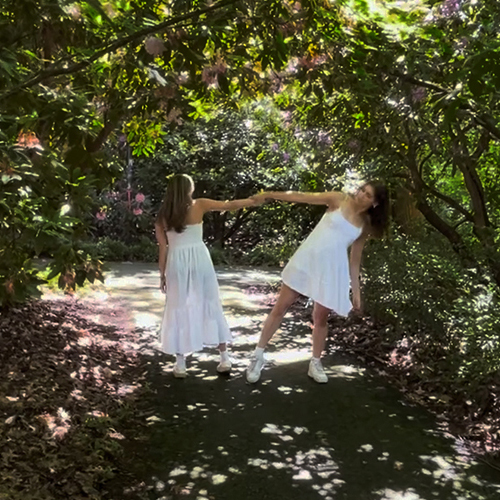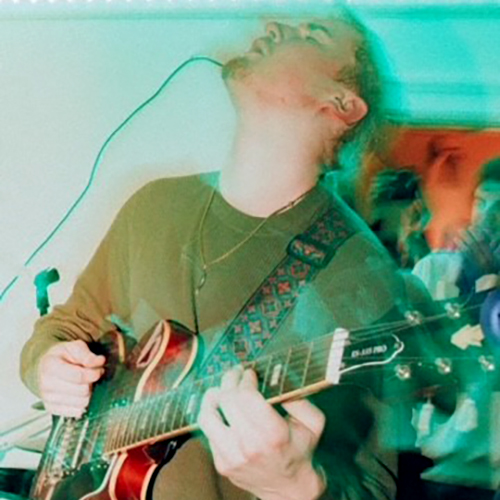
Looking for something new to listen to? Maybe something unexpected? We asked ten faculty from the UW School of Music to suggest a favorite piece of music, and they were happy to oblige. Their selections reflect the School’s breadth, with recommendations in jazz, classical, Gospel, experimental music, world music, early music, and many other genres. So get comfortable, grab your headphones (or not), and give your ears a treat!
(Most suggestions include a link to audio or video. If you love what you hear, consider showing your support by purchasing the song or album.)
American Popular Music

A Song for You (1970)
Leon Russell, composer
Performed by Ray Charles, 1993
Suggested by Tom Collier, professor emeritus of jazz studies
There are dozens of songs that I consider to be among my “favorite,” ranging in style from jazz to folk and just about everything in between. One that I also enjoy playing on vibraphone is “A Song For You.” Leon Russell released the song on his 1970 debut solo album, and over the years many significant musicians/vocalists have recorded it. My favorite recording was by Ray Charles, one of the great icons of American music. Charles sings and plays the piano on the track (also featuring legendary jazz and studio drummer Steve Gadd) and his unforgettable gospel-tinged performance really brings out the emotional essence of Russell’s lyrics. Additionally, the music is laced with elements of jazz harmonies, rhythm and blues elements, and a beautiful melody line that evokes the true soul of American music.
World Music

La Bamba (traditional)
Composer unknown
Performed by Son de Madera on the album Las Orquestas del Día (2004)*
Suggested by Shannon Dudley, professor of ethnomusicology
This song, a traditional son jarocho from Veracruz, Mexico, is familiar to many American listeners because of the rock and roll version that Ritchie Valens recorded in 1958. Son de Madera’s version evokes the participatory atmosphere of a community fandango with its alternating singers, zapateado foot percussion, and improvisation. Ramon Gutierrez’s virtuoso playing on the requinto (melody guitar) is one of the highlights. Son de Madera were Community Artists in Residence with the UW School of Music’s Ethnomusicology program in 2009.
*If this album is hard to locate, check out Son de Madera's more recent Smithsonian Folkways recording.
Orchestral Music

Four Sea Interludes (1945)
Benjamin Britten, composer
Performed by the Boston Symphony in 1990
Suggested by Saeunn Thorsteinsdottir, assistant professor of cello
Originally written as scene changes for his opera "Peter Grimes," Britten masterfully weaves the Four Sea Interludes together to create a stand-alone orchestral masterpiece. The interludes are: Dawn, Sunday Morning, Moonlight, and Storm. This recording is from a live 1990 concert of the Boston Symphony with Leonard Bernstein conducting.
Contemporary Classical Music

Umoja (2001)
Valerie Coleman, composer
Performed by Imani Winds (including the composer on flute)
Suggested by Anne Searcy, assistant professor of music history
“Umoja” is two minutes and thirty seconds of complete effervescence. A buoyant little gesture in the oboe opens the piece and repeats nearly constantly, but along the way composer Valerie Coleman bounces it among the different instruments of the ensemble, constantly combining it with other melodies and textural elements so that it remains fresh. Once you’ve fallen in love with Coleman’s music, I also recommend her Portraits of Langston and Wish Sonatine.
Jazz

Fleurette Africaine (1962)
Duke Ellington, composer
First recorded on the album Money Jungle, with Duke Ellington (piano), Charles Mingus (bass), and Max Roach (drums)
Suggested by Ted Poor, assistant professor of drums
"Fleurette Africaine" is a mesmerizing work of arresting beauty. Ellington's statement of the tune is at once alluring, lush, and prickly, with Mingus and Roach orbiting the song with swirls of sound and color. Each player is somehow simultaneously independent yet unified by a mysterious subterranean connection. The result is a thoroughly captivating artistic statement.
Choral Music

Little Match Girl Passion (2007)
David Lang, composer
Performed by Theatre of Voices, conducted by Paul Hillier (premiering ensemble)
Suggested by Giselle Wyers, professor of choral conducting
The Pulitzer prize-winning Little Match Girl Passion certainly evokes winter, but takes a completely different angle compared to traditional festive holiday music — buyer beware! The music, with words drawn from a Hans Christian Anderson tale, emphasizes sensations of cold and darkness experienced by a poverty-stricken girl selling matchbooks on the street in winter. While the ending is predictably tragic, the hypnotic music is full of radiant mysticism and spiritual grace in the face of despair.
Gospel Music

Anthem of Praise (2001)
Total Praise (1996)
Richard Smallwood, composer
Suggested by Phyllis Byrdwell, artist in residence, director of the UW Gospel Choir
As a Gospel musician and classically trained pianist/vocalist, I gravitate to Richard Smallwood, a classically trained composer-musician who writes across the genre of Gospel, adding orchestras, singers, percussion, and other instruments. Smallwood is prolific, but of his many songs that I love and have taught to various groups, I’d recommend starting with “Anthem of Praise” and “Total Praise.” These two pieces are as different as night and day — the first is fast tempo, the latter slow tempo — but equal in depth and substance. The Amen section at the end of Total Praise, for example, is used by itself as well as at the end of the song. The way it is constructed is an added bonus, with a simple melody motif interwoven between the sopranos, altos, and tenors, and a pedal point motif in the bass section.
- Watch/listen to “Anthem of Praise” performed (with dancers!) by Richard Smallwood and his group Vision on YouTube.
- Watch/listen to a performance of “Total Praise” on YouTube.
Early Music

"Quant yver la bise ameine/In seculum"
"Joliement /Quant voi la florete/Je sui joliete/Aptatur"
Composer unknown
Performed by Anonymous 4 on their 1994 album, Love’s Illusion
Suggested by JoAnn Taricani, Aura Bonell Morrison Endowed Professor of Music History
These songs are included in a recording titled "Love's Illusion," a collection of 30 songs performed by Anonymous 4 focusing on songs of love and nature. These two pieces focus on the seasons: "Quant yver" particularly focuses on the isolation of winter in the Middle Ages, describing the "sharp breezes" and "grass no longer green" of the season and the difficulty of finding company in this icy weather. The other song is a cry for help from a young woman shut away in a convent where she can see the world of flowers coming to life in spring while she cannot escape. The musical approach of Anonymous 4, with women singing all parts, marked a shift in interpreting the female view of medieval music, and has influenced decades of our early music student singers at the UW.
- Listen to Anonymous 4’s performance of “Quant yver” on YouTube.
- Listen to Anonymous 4’s performance of “Joliement” on YouTube.
Music for Young Listeners

Shake, Sugaree (1966)
Elizabeth Cotten, composer
Performed by Elizabeth Cotten and Brenda Evans
Suggested by Patricia Shehan Campbell, professor of ethnomusicology and music education
Like so many of the 28 children’s songs on the album Music for Children, Music by Children (2017, Smithsonian Folkways), this song invites listeners of every age to slip into the playful musical world of children. “Shake, Sugaree” is performed by American blues and folk musician Elizabeth “Libba” Cotten and her 12-year-old great-granddaughter, Brenda Evans. Left-handed Cotten was known for playing a right-handed guitar upside down so that she played the melody with her thumb and bass line and chords with her fingers. Her alternating bass and chords were signature to her style, too. The tuneful old-time traditional song suggests that despite the worries of hard times, one can still “Shake Sugaree” — dance with joy and abandon. In fact, “sugaree” refers to throwing sugar on the floor and then dancing percussively on the sugared floor.
- Listen to Elizabeth Cotten and her great-granddaughter Brenda Evans perform “Shake, Sugaree” (Brenda's vocals, Elizabeth on guitar) on YouTube.
- Listen to Elizabeth Cotten perform "Shake, Sugaree" with audience participation on YouTube.
Experimental Music

Buzz (1994)
Barry Guy, composer
Performed by Fretwork
Suggested by Huck Hodge, professor of composition
The thorny exuberance of Charles Mingus, the crisp lucidity of Henry Purcell, avant-garde free improv, and a slowly unfolding imaginary renaissance chorale all mingle together in “Buzz,” a work by the British experimental jazz bassist Barry Guy. There is only one recording of this piece (that I know of) — on the album Sit Fast, an array of compositions commemorating the tercentenary of Henry Purcell’s death, which also includes tracks by the (living) likes of Elvis Costello and Poul Ruders. Interlaced with those pieces are works by 15th-century luminaries such as Johannes Ockeghem and Heinrich Isaac. All pieces on the album are stunningly performed by Fretwork, a consort of Renaissance-era stringed instruments.
More Stories

Dancing Across Campus
For the dance course "Activating Space," students danced in public spaces across the University of Washington's Seattle campus this spring.

Read or Listen to Faculty Favorites
Looking for book or podcast recommendations? We asked faculty who've been featured in Perspectives newsletter during the past academic year to suggest a personal favorite.

Celebrating Contemporary Indigenous Music
Markus Teuton, a musician and citizen of Cherokee Nation, explores contemporary Indigenous music through his academic work and as host of “Indigenous Jazz,” a radio show.